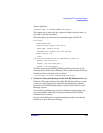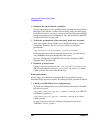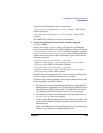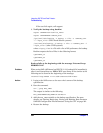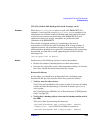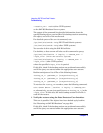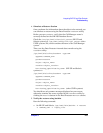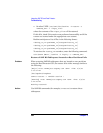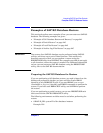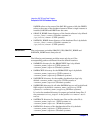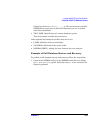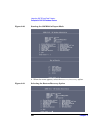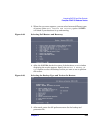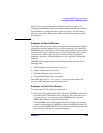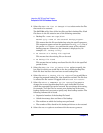
Integrating SAP R/3 and Data Protector
Examples of SAP R/3 Database Restore
Chapter 2 239
Examples of SAP R/3 Database Restore
This section describes some examples of how you can restore an SAP R/3
database. The following examples are given:
• “Example of Full Database Restore and Recovery” on page 241
• “Example of Partial Restore” on page 245
• “Example of Lost Files Restore” on page 245
• “Example of Archive Log Files Restore” on page 247
IMPORTANT The restore of an SAP R/3 database can be performed using SAP R/3
utilities, which are not a part of Data Protector. This section only
describes examples of how you can perform a restore using the
BRRESTORE utility from SAPDBA. The examples provided do not apply
to all situations, where the restore is needed. For additional information
on how you can restore an SAP R/3 database using the BRRESTORE
utility, refer to the SAP R/3 documentation.
Preparing the SAP R/3 Database for Restore
If you are performing a full database restore, you need to know how the
backup was performed; whether you have used the Oracle RMAN
channels or only BRBACKUP tools. If you used RMAN, use svrmgrl
(Oracle8/8i) or sqlplus (Oracle9i), and RMAN commands to perform the
restore. If you have used BRBACKUP utility, use SAPDBA to perform
the restore.
If you are performing a partial restore, you can use BRRESTORE tools
that come with the SAP R/3 BRBACKUP utility.
The following environment variables must be set before performing the
restore:
• ORACLE_SID: system ID of the database instance
Example: P01



